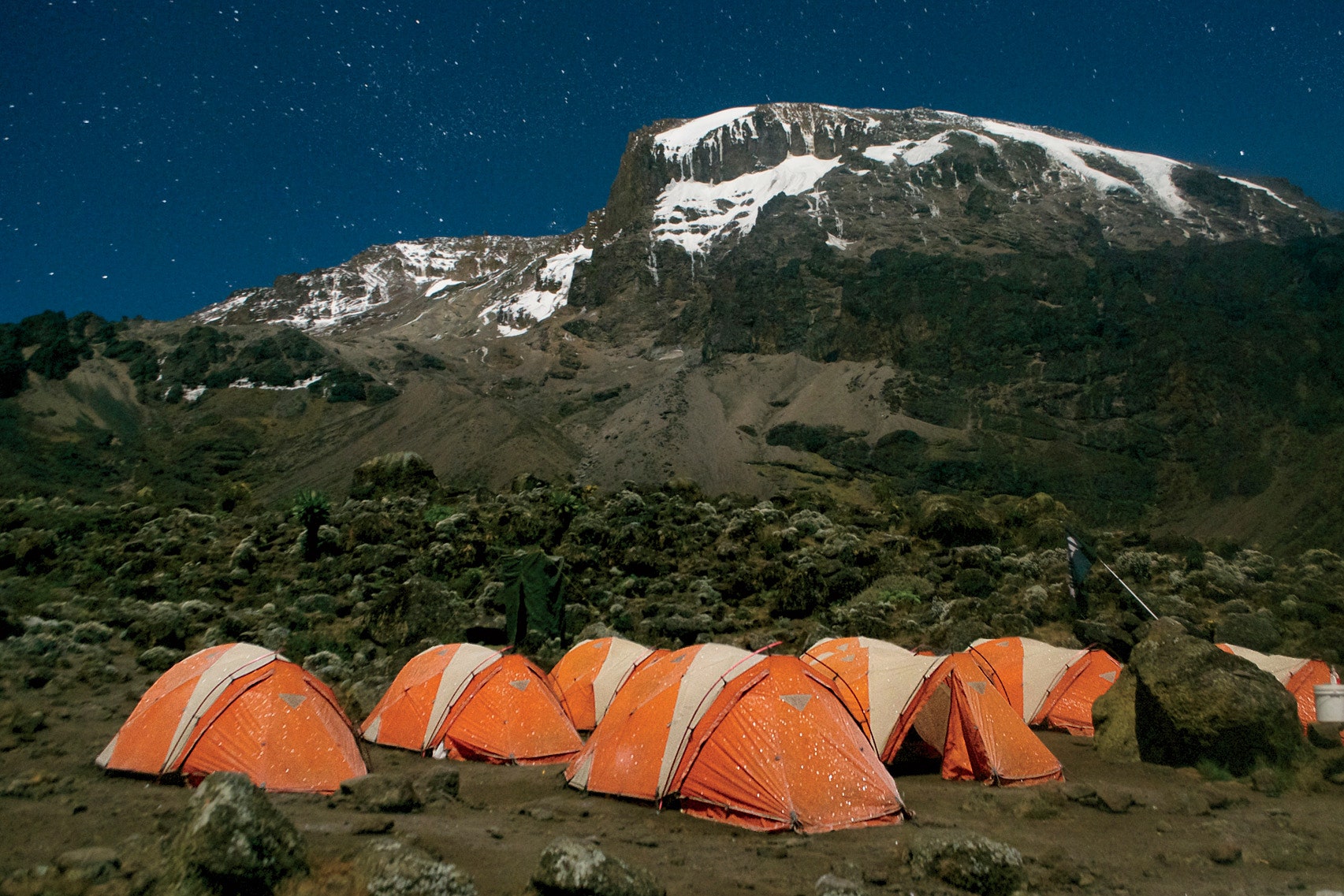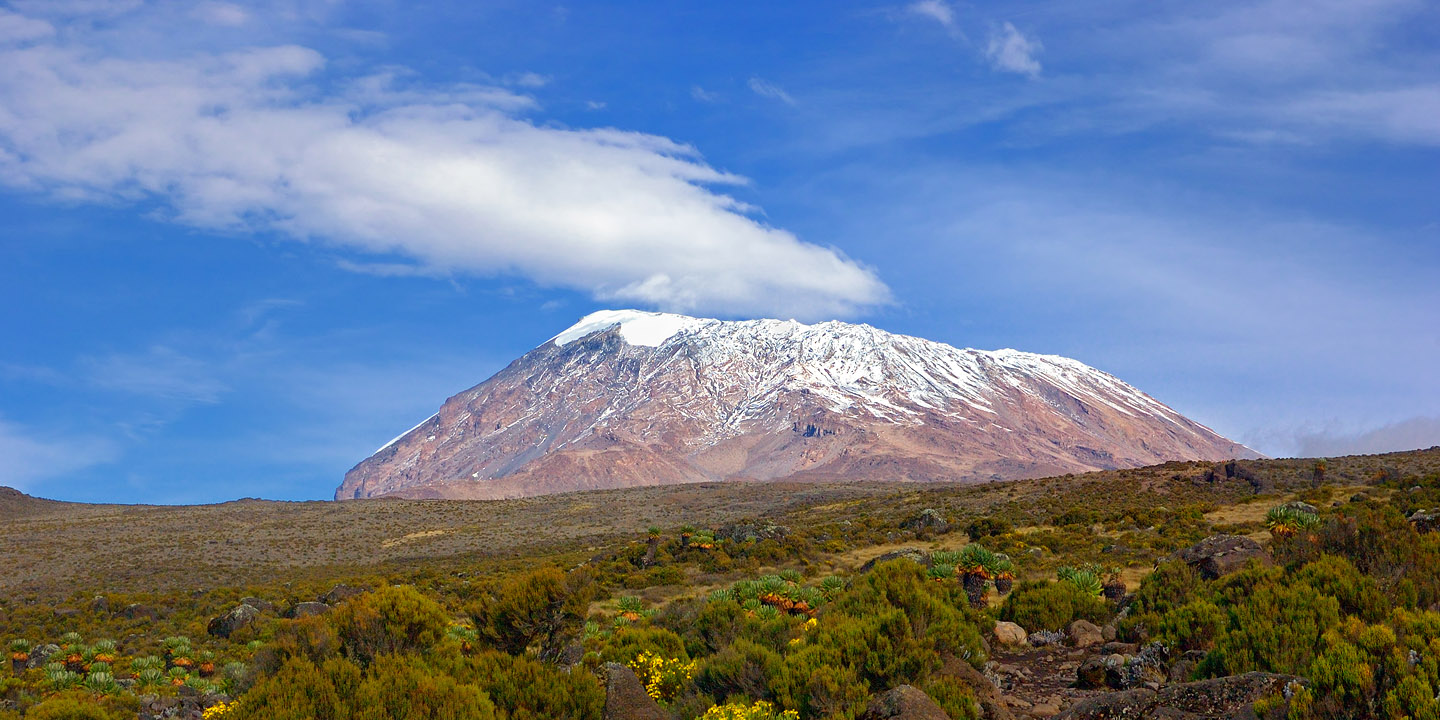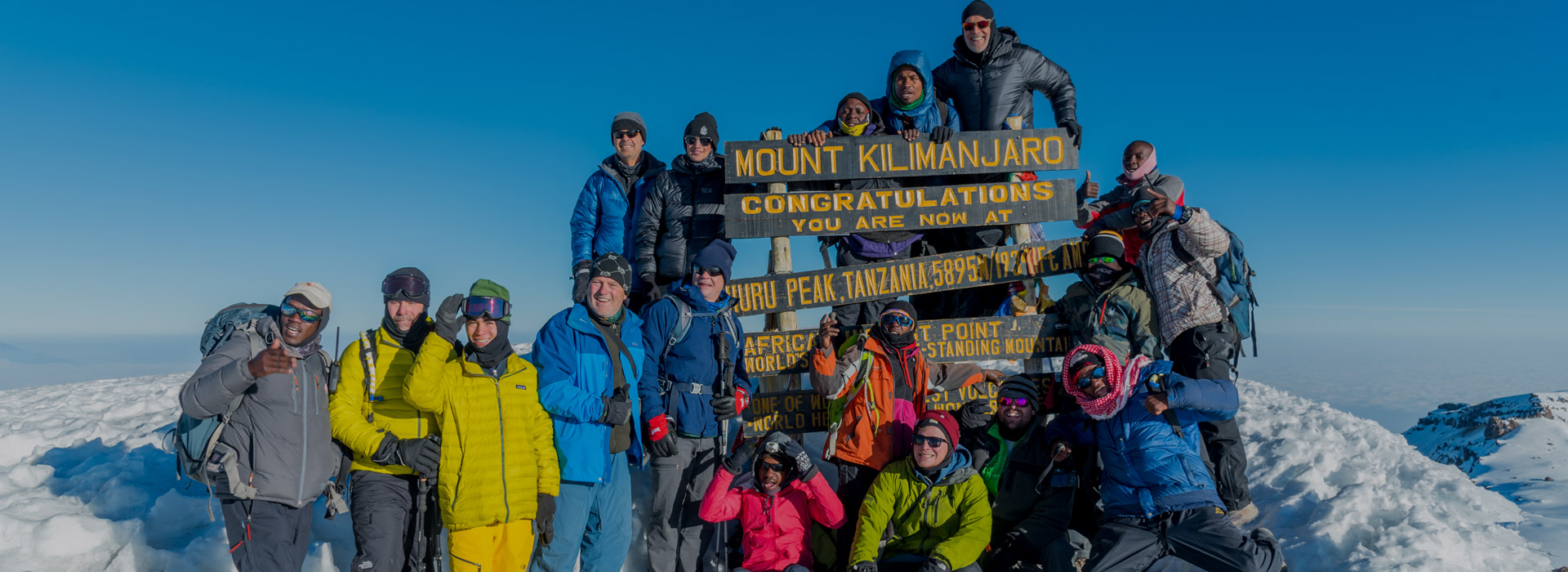Mt Kilimanjaro National Park
The Crown of Africa
The highest peak in Africa. The biggest freestanding mountain in the world. One of the largest volcanos on the planet – this is mighty Mt. Kilimanjaro – a towering symbol of grandeur, majesty and power.
Many travellers on Tanzania safaris view this awesome summit as one of the greatest sights on the continent. Other travellers regard an ascent up Kilimanjaro as a life-long dream. You don’t need technical mountaineering skills, ropes or equipment to make the climb. But you do need plenty of preparation and time to acclimatize as you’ll be trekking up to a summit of 5896m (19,341ft).
That’s the elevation at Uhuru Peak, the top of Kibo, the highest of three volcanic cones topping Kilimanjaro, a stratovolcano. The great volcano is dormant, although those who reach the summit can still peer into Kibo’s crater and see sulphurous smoke rising from deep inside.
Though the great mountain is near the equator, its extreme altitude means below-freezing temperatures, strong winds and snow on top, giving the iconic peak its distinctive white glaze, seen for hundreds of miles throughout Tanzania and Kenya.
But not all is cold and forbidding on Kilimanjaro. Hikers and climbers starting their journey will traverse several ecosystems on their exploration up the mountain.
Tropical Forest
There are 7 trekking routes up the mountain, some designed for faster ascents, others giving more time to acclimatize. Whichever route you take, you’ll begin in the richly vegetated lowland forest due to the heavy rainfall here. Although a visit to Kilimanjaro is not really about the wildlife, it is in this lowland forest you’ll have the greatest chance of seeing buffalo, elephant, monkeys and eland.
Uplands
At about 3,100m (10,170ft) the forest thins out and you’ll be trekking above the clouds to generally clear skies. The sun is strong and the moorlands here are sparser in their vegetation. You may also notice the air thinning and need to take rests.
Alpine Desert
As your climb continues, the vegetation almost disappears except for some mountain flowers and mosses. At 4,000m (13,123ft) you’ll most definitely feel the further thinning of the air’s oxygen content.
Moonscape
This last stretch of your climb brings you to fields of ice and rock. Climbing over 5000m (16,400ft) you’ll need to pace yourself as the oxygen continues to deplete. But you’ll soon reach the peak, the highest spot in Africa.
Enjoy the views of the vast plains below. You’ve earned a place amongst elite trekkers as someone who has capped one of the Seven Summits of the World.
 About Mt. Kilimanjaro Park
About Mt. Kilimanjaro Park
Though the park is only 1,688 sq. km (652 sq. mi) it encompasses one of the largest mountains in the world.
Location:
Just 200 miles from the equator, the mountain holds many glaciers. It is situated in northern Tanzania.
Climate:
Because Mt. Kilimanjaro is more of a vertical park, the climate changes as you ascend the mountain.
The rainforests at the base are usually quite humid and wet. Rising above the cloud line, the air is drier and clear but also much colder. The summit area averages a temperature of -7oC (19oF).
Best time to visit:
Kilimanjaro is accessible any time during the year but the weather patterns on the mountain are erratic and hard to predict. The best time for climbing is during the dry season from late June to October.
Getting there:
You can book a tour or a climb with Pride Drive Tour Solutions from Arusha, about 45 km (28 mi) away.
By air: Kilimanjaro International Airport services Arusha.
 Preparing for Mt. Kilimanjaro
Preparing for Mt. Kilimanjaro
Although many attempt to summit the mountain only about 50% actually complete the climb. That doesn’t mean you can’t enjoy the experience as far as it takes you. Just be realistic about the mountain and its harsh conditions.
Of course, you should be in fairly good shape and not try and push the climb, giving yourself 6 or more days for the ascent. Still, the extreme cold and altitude can fell even the most experienced climber.
The symptoms of extreme altitude sickness – headache, nausea, diarrhoea and loss of appetite – should be taken very seriously.
You’ll need waterproof cold-weather clothing and gear, a good quality sleeping bag and plenty of water bottles. The grandeur of Mt. Kilimanjaro is awe-inspiring but ultimately this mountain must be respected.
Discover Mt. Kilimanjaro
Visiting Mt. Kilimanjaro can be one of the great experiences of your Africa Holiday. Few summits share its fame or its power to conjure up the magnificence of our planet.
We have safaris departing from Arusha going to Mt. Kilimanjaro and other exciting Tanzania Parks. Embark on one of our mountain trekking experiences.


